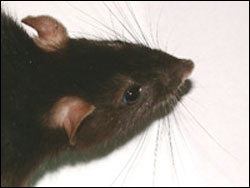Physics and Astronomy
This area deals with the fundamental laws and building blocks of nature and how they interact, the properties and the behavior of matter, and research into space and time and their structures.
innovations-report provides in-depth reports and articles on subjects such as astrophysics, laser technologies, nuclear, quantum, particle and solid-state physics, nanotechnologies, planetary research and findings (Mars, Venus) and developments related to the Hubble Telescope.

Nano surfaces could slash cost of solar energy
Nanotechnologies which can artificially change the optical properties of materials to allow light to be trapped in solar cells could greatly reduce the cost of solar energy.
Research being carried out by the School of Electronics and Computer Science (ECS) at the University of Southampton is focusing on nanopatterning as the way to design effective solar panels. ‘By drawing features that are much smaller than the wavelength of light, photons can be confused into doing things t

Experiments prove existence of atomic chain ’anchors’
Atoms at the ends of self-assembled atomic chains act like anchors with lower energy levels than the “links” in the chain, according to new measurements by physicists at the National Institute of Standards and Technology (NIST).
The first-ever proof of the formation of “end states” in atomic chains may help scientists design nanostructures, such as electrical wires made “from the atoms up,” with desired electrical properties.
The NIST experiments, described in the Feb. 4

Rat Whisking May Provide Insight Into Debilitating Eye Disorder
Physicists at the University of California, San Diego have discovered a neural circuit in rats that could provide a powerful model for understanding a neurological condition known as blepharospasm—uncontrolled eye blinking that affects 50,000 people in the U.S. and leaves some patients functionally blind.
In the February 3 issue of the journal Neuron, the researchers, Quoc-Thang Nguyen and David Kleinfeld, describe the brain circuit, which coordinates sensory inputs and muscle acti

Lost and found: X-ray telescope locates missing matter
NASATMs Chandra X-ray Observatory has discovered two huge intergalactic clouds of diffuse hot gas. These clouds are the best evidence yet that a vast cosmic web of hot gas contains the long-sought missing matter – about half of the atoms and ions in the Universe.
Various measurements give a good estimate of the mass-density of the baryons – the neutrons and protons that make up the nuclei of atoms and ions – in the Universe 10 billion years ago. However, sometime during the las

Astronomers find part of universe’s missing matter
Found: 7 percent of the mass of the universe. Missing since: 10 billion years ago.
Consider one more astronomical mystery solved. Scientists have located a sizeable chunk of the universe that seemed to be missing since back when the stars first formed. It’s floating in super-hot rivers of gas, invisible to the naked eye, surrounding galaxies like our own. And a completely different kind of mystery matter — dark matter — may have put it there. The results appear in the curren

The birth of galaxies and stars
Cardiff experts’ key role in space telescope mission
Experts at Cardiff University, UK, are designing and building highly sophisticated equipment, which will travel deep into space to enable scientists to look back in time to observe the formation of galaxies and stars. A team in the School of Physics and Astronomy is heading an international consortium, led by Cardiff’s Professor Matt Griffin, to produce SPIRE. This is a three-colour camera and spectrometer, which will b